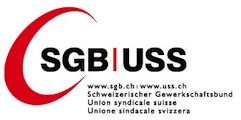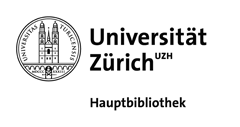Publications des institutions partenaires
Export Diversification: What's behind the Hump?
The paper explores the evolution of export diversification patterns along the economic development path. Using a large database with 156 countries over 19 years at the HS6 level of disaggregation (4,991 product lines), we look for action at the intensive and extensive margins. We find a hump-shaped pattern of export diversification similar to what Imbs and Wacziarg (2003) found for…
Institution partenaire
English / 01/01/2011
In Search of Market Access: Why the Doha “Plan B” for December 2011 is likely to fail Erosion from Rules of Origin (Part II)
Once again the Doha Round negotiators are struggling to reach an agreement, this time by mid-December 2011 on a “plan B” package that would give increased market access to the Least Developed Countries (LDCs) under simplified rules of origin (RoO). We argue that in spite of some simplifying reforms by the EU and the US, administrative costs associated with establishing origin will…
Institution partenaire
English / 01/01/2011
In Search of Market Access: Why the Doha “Plan B” for December 2011 is likely to fail Effective Market Access (Part I)
Once again the Doha Round negotiators are struggling to reach an agreement, this time by mid-December on a “plan B” package that would give increased market access to Least Developed Countries (LDCs) in the form of duty-free-quota free (DFQF) access accompanied by simplified rules of origin. Estimating ‘effective market access' to the two largest ‘preference-givers', the US…
Institution partenaire
English / 01/01/2011
Costing improved water supply systems for developing countries
The aim or this paper is to present a practical manual prepared for the World Health Organization (WHO) on how to identify, collect, estimate and compare costs of the available technical options to provide access to safe drinking water in low-income communities.
Institution partenaire
English / 01/01/2011
A New Measure of Tariff Preference Margins Adjusted for Import and Domestic Competition
This paper provides a new theoretically-derived measure of preference margins at the product level, that takes into account competition across exporters as well as competition with domestic producers on a given market. This indicator is derived for differentiated goods under imperfect competition, in a frame-work extended from Ottaviano, Tabuchi and Thisse (2002). We compute our…
Institution partenaire
English / 01/01/2011
Who opposes immigrants’ integration into the labor market ? The Swiss case
Institution partenaire
English / 01/01/2010
Explaining fiscal balances with a simultaneous equation model of revenue and expenditure: a case study of Swiss cantons using panel data
Institution partenaire
English / 01/01/2010
The Doha Round and Market Access for LDCs: Scenarios for the EU and US Markets
Least developed countries (LDCs) hoped that the DOHA round would bring them greater market access in the Organization for Economic Cooperation and Development countries than for non-LDCs. Using HS-6 tariff level data for the United States and the EU for 2004, this paper estimates that, once the erosion from preferential access into the EU to non-LDCs is taken into account, LDCs have…
Institution partenaire
English / 01/01/2010
Measures of export diversification
How export patterns vary across time and countries has become a subject of intense descriptive analysis in recent years. The originality of our work is to compute usual diversification indices using a very large and disaggregated dataset on exports. Export data is from UNCTAD’s COMTRADE database at the HS6 level (4’991 lines).
Institution partenaire
English / 01/01/2010
An invariance property of quadratic forms in random vectors with a selection distribution, with application to sample variogram and covariogram estimators
Institution partenaire
English / 01/01/2010
Wage inequality and segregation between native and immigrant workers in Switzerland: evidence using matched employee-employer data
We analyze segregation between immigrants and natives at the firm level and explore the connection between segregation and wage inequality in Switzerland.
Institution partenaire
English / 01/01/2009
Labor market reforms, job instability, and the flexibility of the employment relationship
Institution partenaire
English / 01/01/2009
China and India’s challenge to Latin America : opportunity or threat?
Institution partenaire
English / 01/01/2009
On crop biodiversity, risk exposure, and food security in the highland of Ethiopia
Institution partenaire
English / 01/01/2009
Social inequality, local leadership and collective action: an empirical study of forest commons
Institution partenaire
English / 01/01/2009
Has distance died? An update
Contrary to expectations, evidence of a death of distance has eluded numerous estimations in the popular gravity model of trade: estimates of the coefficient of distance are markedly higher in studies with recent data. This column shows that this is only so for the poorer countries who are trading with geographically closer partners. This regionalization of trade for low-income…
Institution partenaire
English / 01/01/2009
The Distance Effect and the Regionalization of the Trade of Low-Income Countries
The “distance effect” measuring the elasticity of trade flows to distance has been to be rising since the early 1970s in a host of studies based on the gravity model, leading observers to call it the “distance puzzle”. We review the evidence and explanations. Using an extensive data set of 124 countries over the period 1970-2005, we confirm the existence of this puzzle and identify…
Institution partenaire
English / 01/01/2009
Seiten
Le portail de l'information économique suisse
© 2016 Infonet Economy












